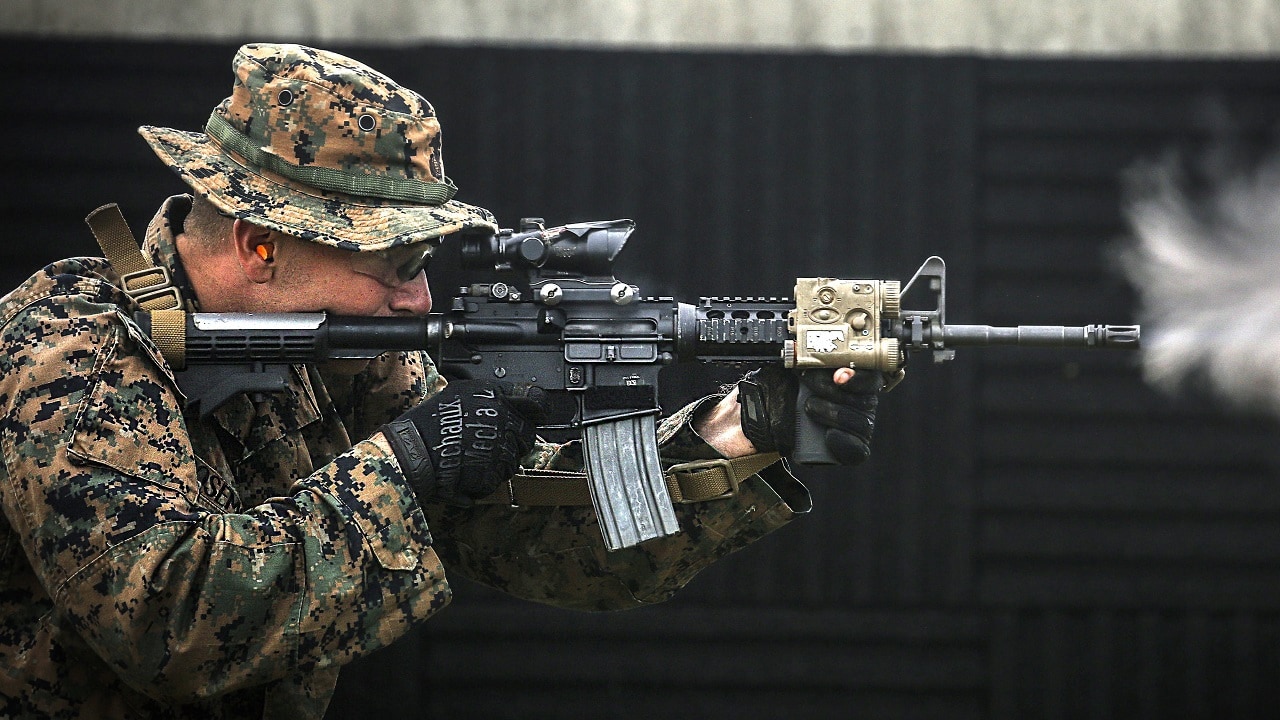To date, Russia has produced fewer than 100 of its T-14 Armata main battle tanks (MBTs), and despite being among the most popular and most capable fighter jets in the world, Lockheed Martin has only built around 840 of its F-35 Lightning IIs.
By contrast, hundreds of millions of rifles were produced in the last century – and five rifles stand out as being the most prolific.
5 Most Produced Military Rifles: The List
5 – The Lee-Enfield
The British Army first employed the Magazine Lee-Enfield in combat soon after it was introduced in 1895, using the rifle in the Sudan Campaign the following year. The bolt-action, magazine-fed repeating rifle was actually a redesign of the Lee-Metford that had only been adopted in 1888. Chambered in the new .303 British cartridge, the Lee-Enfield became the first British rifle to fire a “smokeless” cartridge.
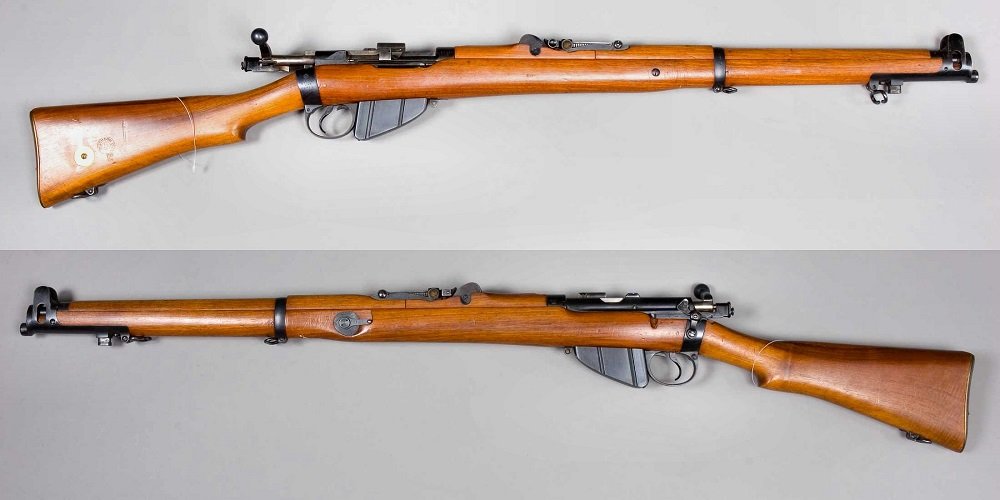
British Short Magazine Lee Enfield. Image: Creative Commons.
Over the subsequent decades, the Lee-Enfield was refined – the weapon shortened by several inches to the more common Short Magazine Lee-Enfield (SMLE), which saw widespread use in the First World War, and then “updated” as the Rifle, No. 4 MkI in time for the Second World War. A sniper variant re-chambered in the 1950s for the 7.62 NATO round and re-designated the L42A1 was used until the mid-1990s. Members of the Canadian Rangers even used the rifle until 2015 – and in parts of the world, the Lee-Enfield remains in service more than 125 years since it was introduced!
Some 17 million Lee Enfields have been produced.
4 – AR-15/M16
Beginning next year, U.S. military will begin to introduce the M5 rifle, which will mark the beginning of the end of the M16 platform that first entered service with the U.S. military more than 50 years ago. Designed by Eugene Stoner, a trained engineer employed at the ArmaLite company, the AR-15 was actually an improved version over his rejected AR-10, a select-fire infantry rifle that was chambered for the 7.62x51mm NATO cartridge. It showed promise, but not enough at the time to interest the military.
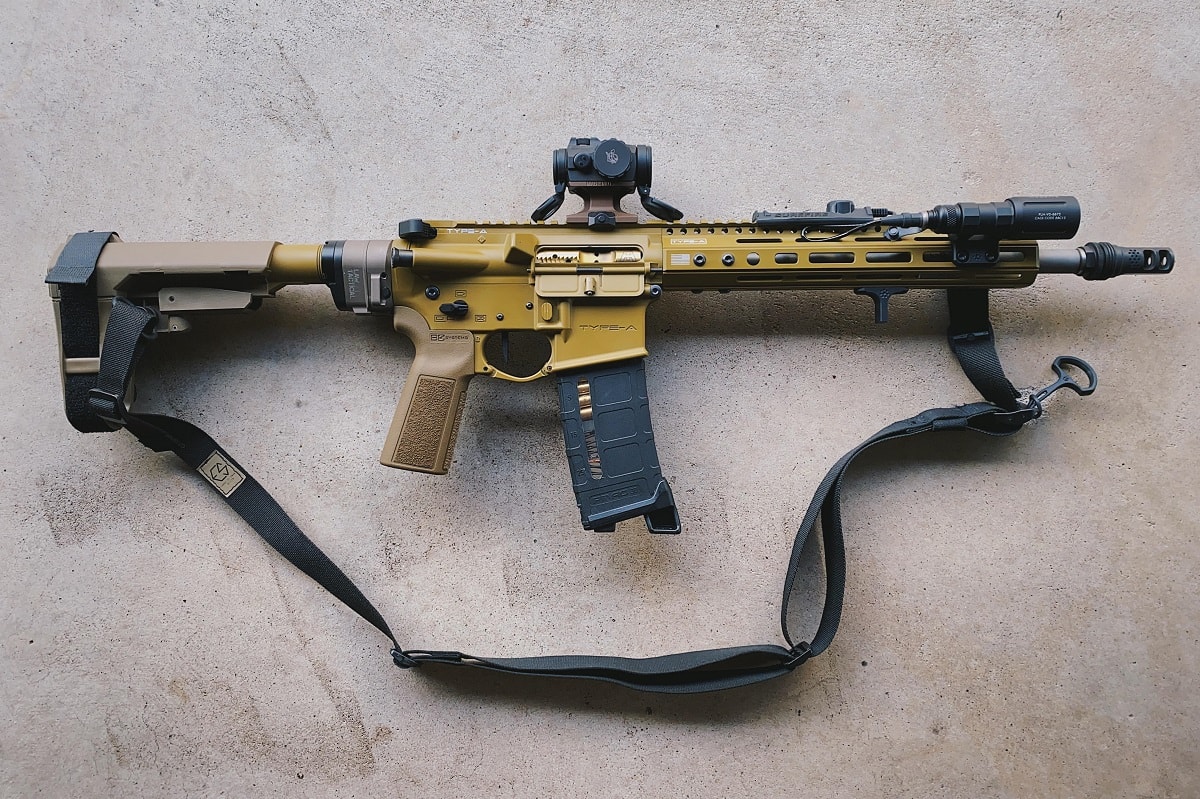
Image Credit: Creative Commons.
It was adopted by the United States Air Force in 1964, and later saw service during the Vietnam War as the M16. Though it had a troubled beginning, it was soon found to be the ideal weapon for the U.S. warfighter and has been steadily improved over the past six decades; while the civilian version has become one of the most popular selling rifles of all time.
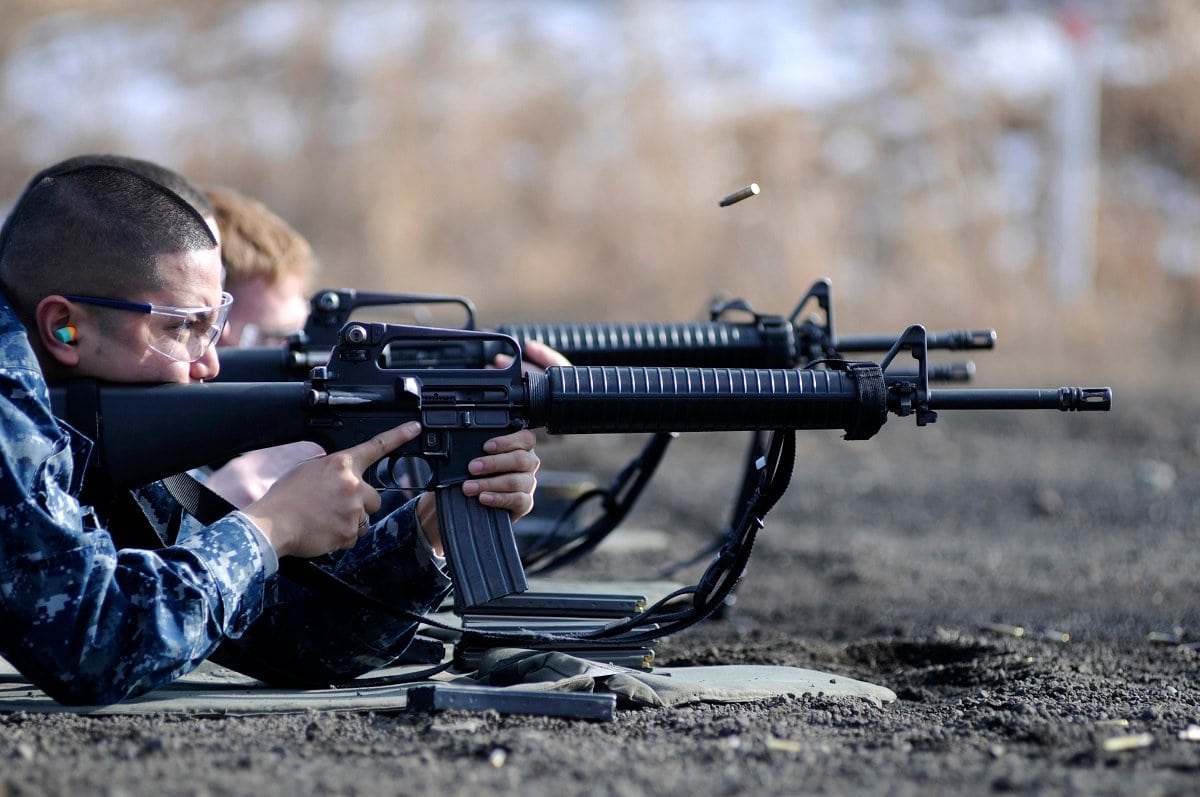
120118-N-XX151-646
CAMP FUJI, Japan (Jan. 18, 2012) Yeoman 3rd Class Ralph Javier, assigned to the U.S. 7th Fleet amphibious command ship USS Blue Ridge (LCC 19), aims an M16 rifle during a gun qualification shoot at Camp Fuji. (U.S. Navy photo by Mass Communication Specialist 2nd Class Aaron M. Pineda/Released)
To date some 20 million AR-15s/M16s have been produced.
3 – Mauser Gewehr 98/Karabiner 98k
The third (maybe second) most produced small arm of modern history could be best described as the German answer to the Lee Enfield, it was the Mauser Gewehr 98. It was a marked improvement from the Gewehr 1888, and was noted for featuring a five-round internal clip-load magazine. It was the standard German service rifle from 1898 until 1935.
The rifle was upgraded as the Karabiner 98K (commonly known as the Kar98k), which became the standard service rifle of the German Wehrmacht. Though it was one of the final developments in the line of Mauser military rifles, it remains in service throughout the world today for training and second-line use. Production of the Mauser G98/K98 can be described as “massive” as it was sold throughout the world, and in the early 20th century most of the armies of South America were equipped with a Mauser.
Sources dispute how many were produced, with low estimates noting the 20 million made for Germany, while export models could have been as high as 102 million!
2 – Mosin-Nagant
Designed for a peasant warrior, no rifle was simpler to use than the Mosin-Nagant. It was first introduced in 1890 for the Imperial Russian Army, was used in the First World War, then employed by both sides in the Russian Civil War, and updated by the Soviet Red Army in 1930.
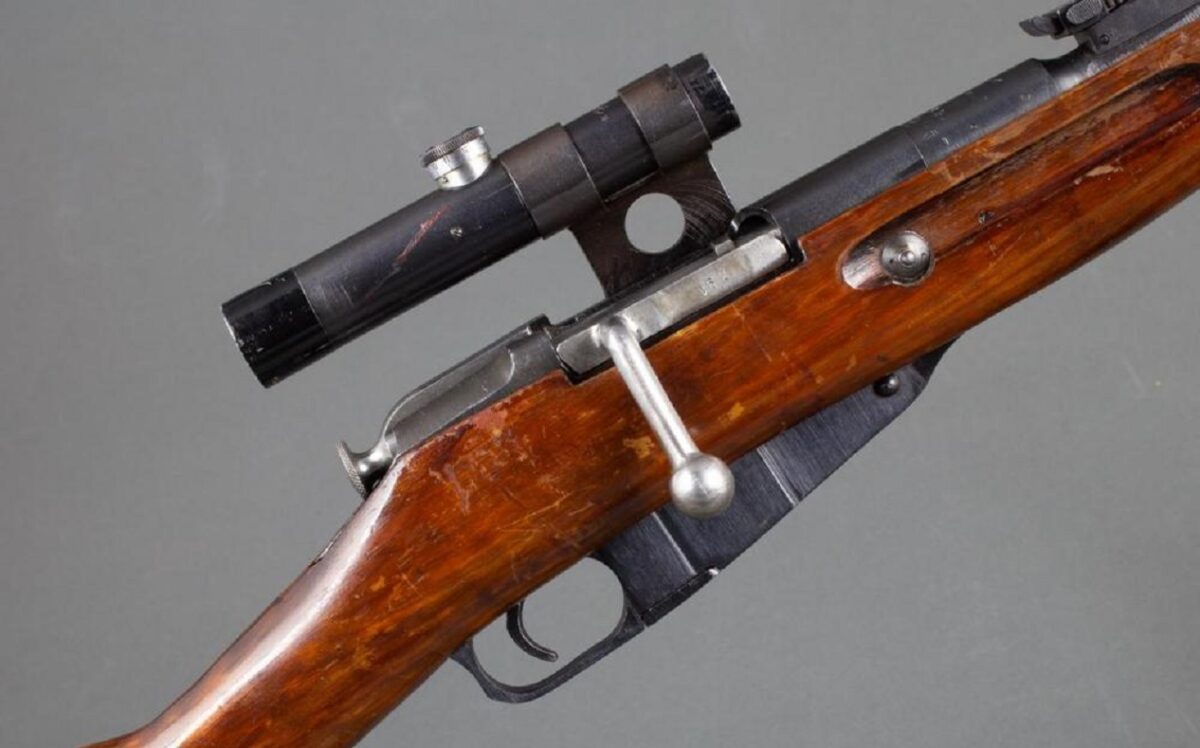
Mosin–Nagant Rifle. Image Credit: Creative Commons.
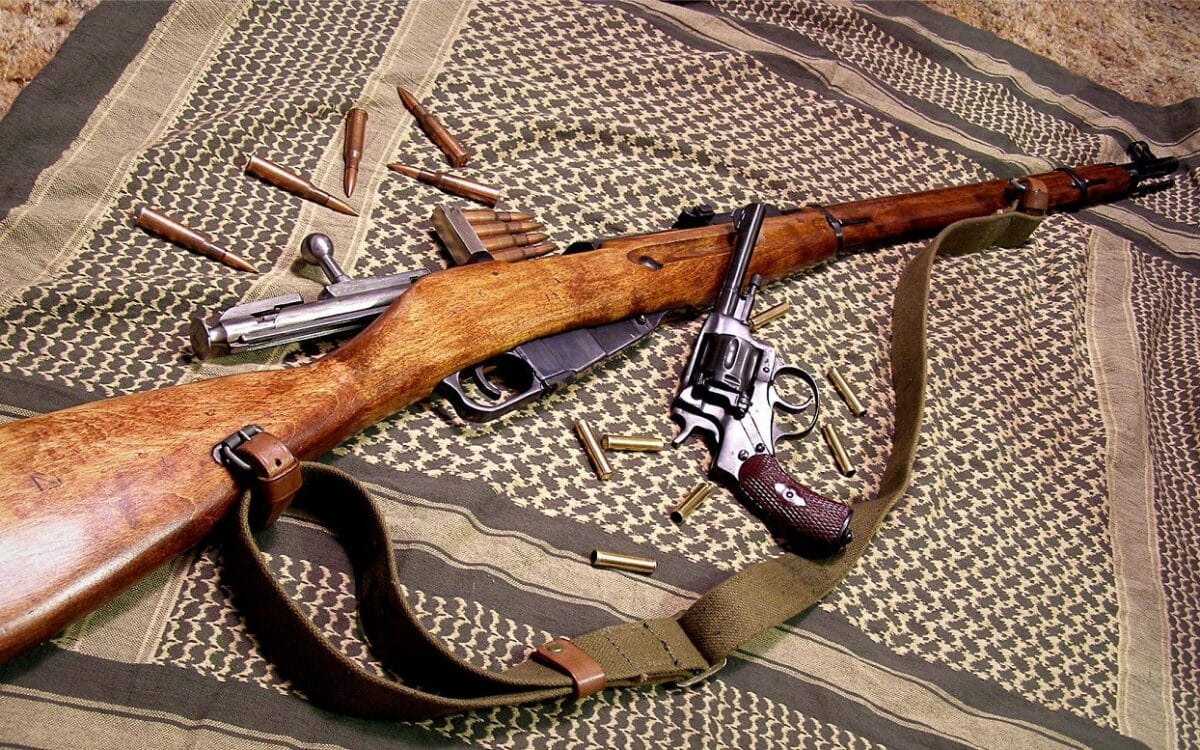
Image: Creative Commons.
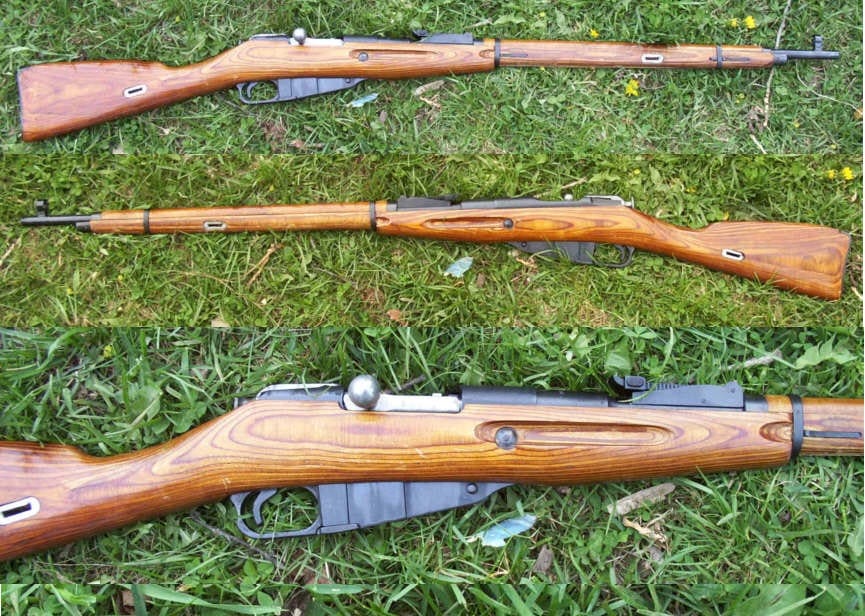
Mosin-Nagant. Image Creative Commons.
The Mosin-Nagant was even the most widely used small arm in the Second World War. Despite Soviet efforts to replace the bolt action rifle with the semi-automatic SVT-40, production of the Mosin-Nagant actually increased by the war’s end in 1945. Nearly 38 million were produced and during the Cold War, even as more modern rifles entered service, it still found use throughout the world. The rifle was supplied to Communist insurgents and Soviet allies, while it remains in ceremonial use in Russia. There are reports some Mosin-Nagants are even being carried by Russian soldiers in Ukraine!
Some 37 million Mosin-Nagants were produced, and millions were offered as military surplus in recent decades making the rifle also one of the most widely sold Russian/Soviet products ever!
1 – AK-47 and Derivatives
It is unlikely Mikhail Kalashnikov, reported designer of the AK-47 (this writer still thinks he had a lot of help), ever expected to have a hand in producing the most widely used firearm in human history. However, the rifle became a global phenomenon owing both to its low production cost and its reliability under harsh circumstances.
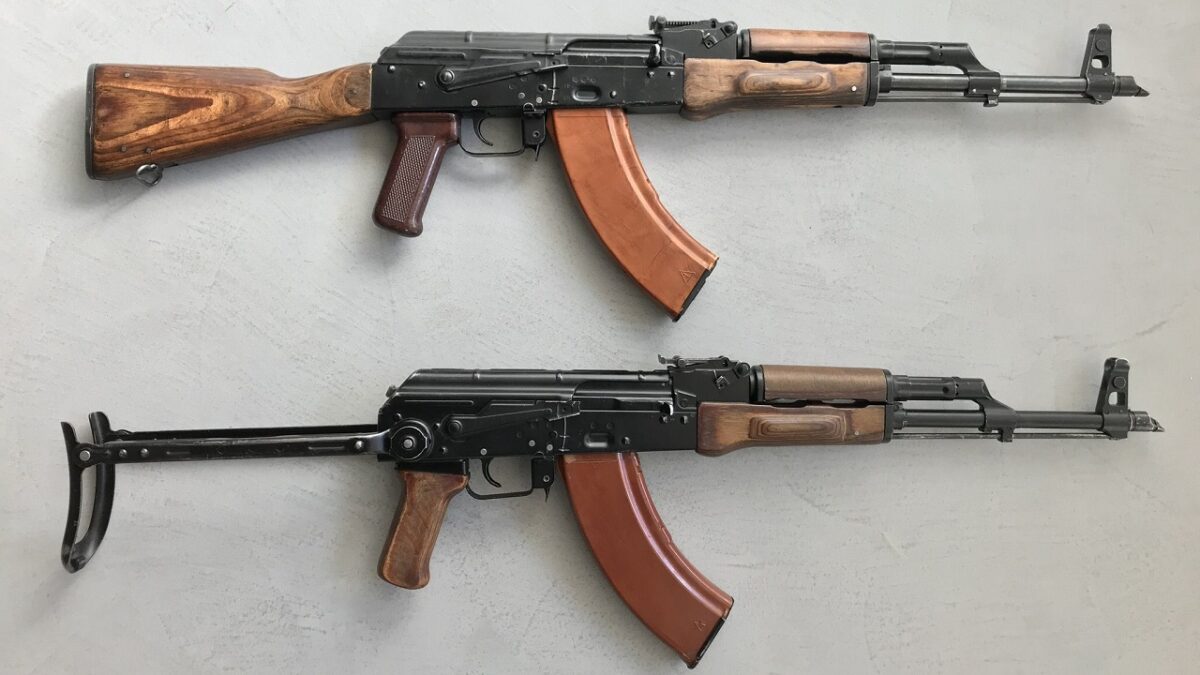
AK-47. Image Credit: Creative Commons.
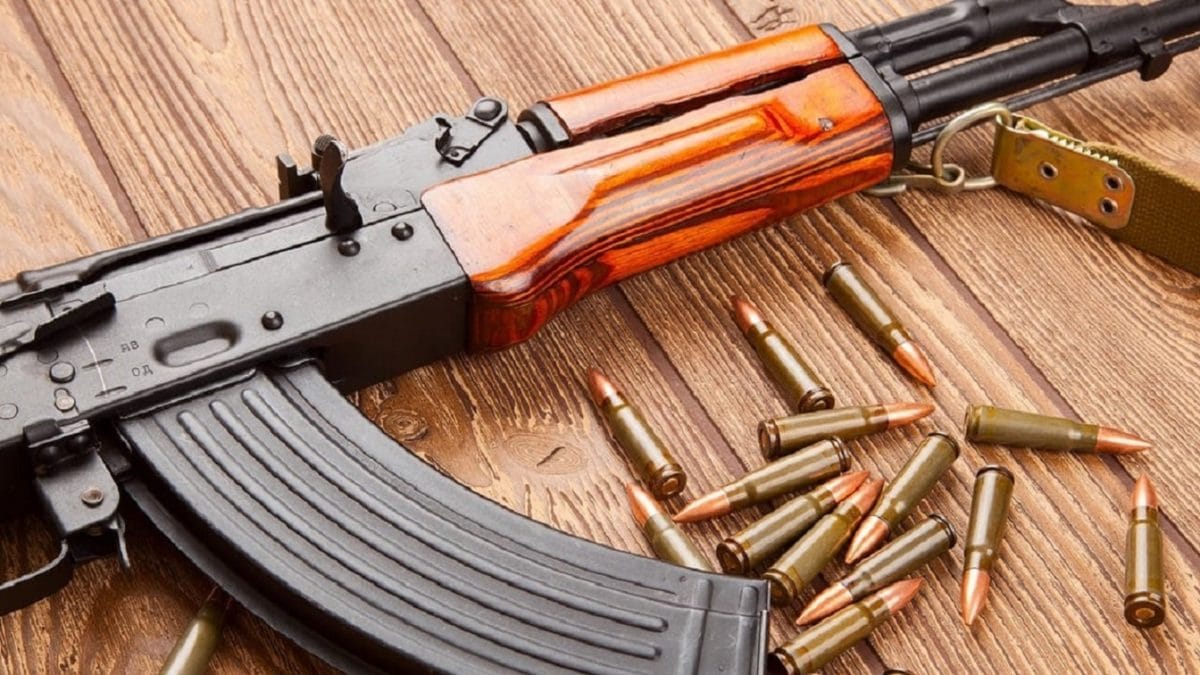
AK-47. Image Credit: Creative Commons.

Iraqi airmen fire AK-47s during firing drills March 29, 2011. Members of the 447th Expeditionary Security Forces Squadron trained Iraqi security forces airmen ensuring weapons qualification and teaching defensive tactics, vehicle searches and other force protection measures. (U.S. Air Force photo/Staff Sgt. Levi Riendeau)
Because the Soviet Union supplied the weapons to insurgents around the world and allowed it to be produced by its Warsaw Pact allies, as well as other communist/socialist/client states, exact production numbers are unknown. Low estimates suggest 40 million were produced, but others speculate the number was as high as 150 million.
Bonus: Glock’s Top Firearms

Glock 38. Image Credit: Creative Commons.
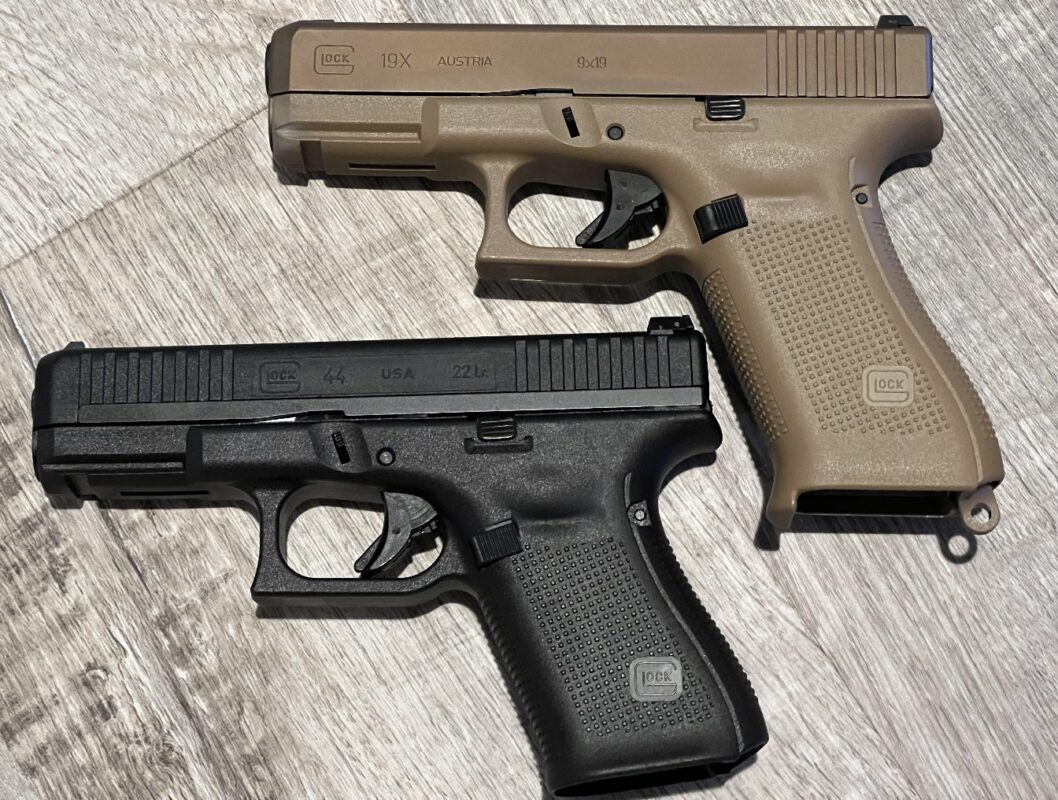
Glock 19X and Glock 44 side by side. Image Credit: 19FortyFive Original Image.
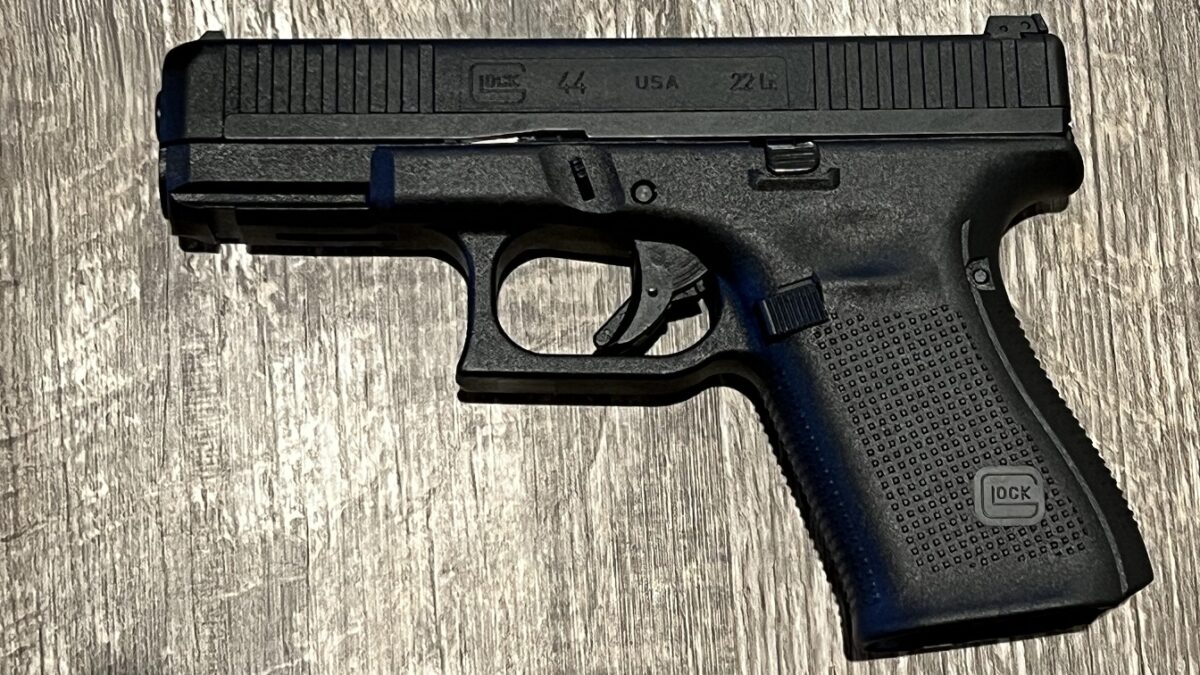
Glock 44. Image Credit: 19FortyFive Original Image.
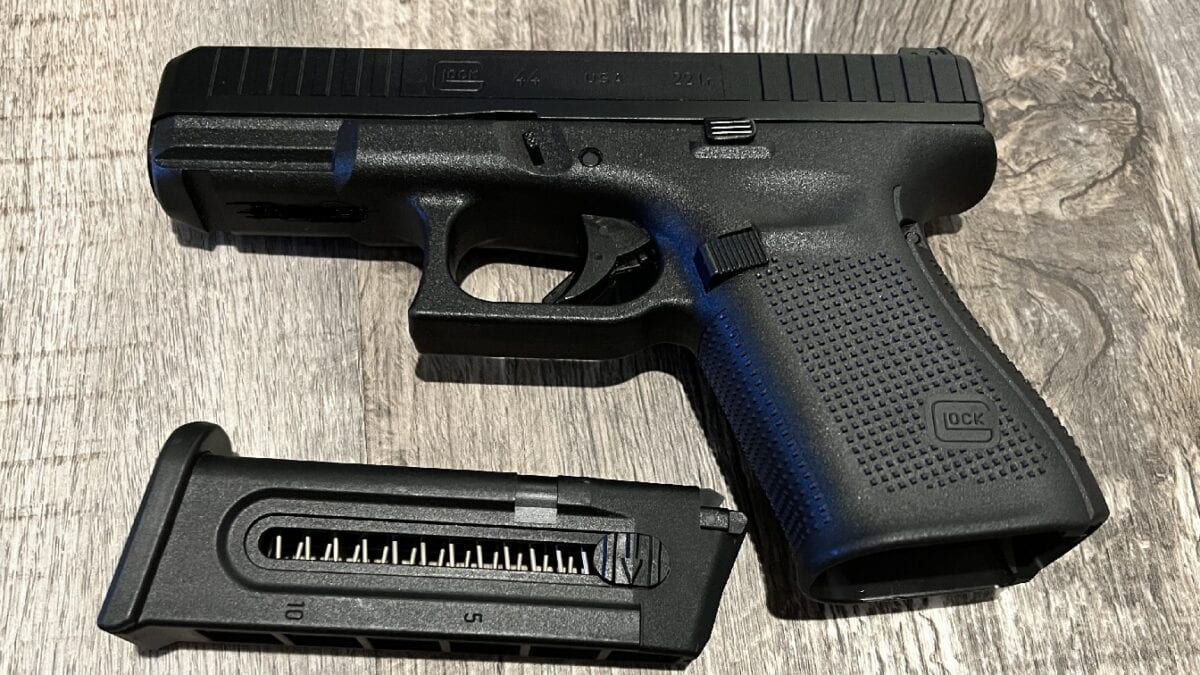
Glock 44. Image Credit: 19FortyFive Original Image.
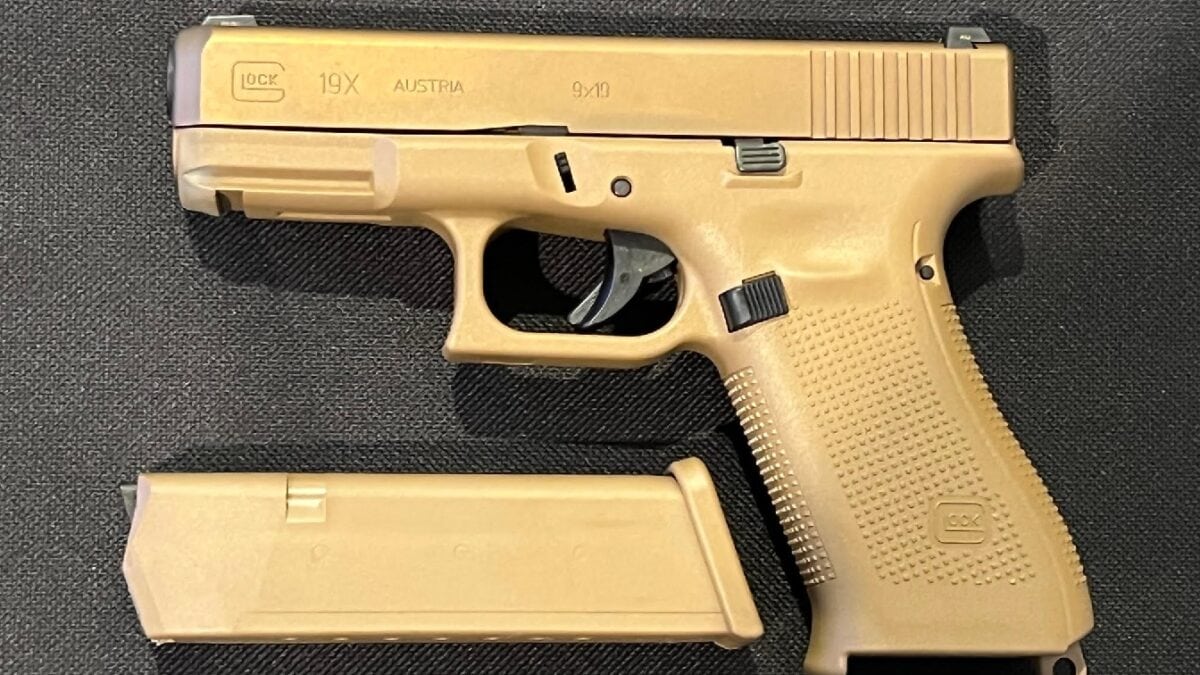
Glock 19X. Image Credit: Original Image from 19FortyFive.
A Senior Editor for 1945, Peter Suciu is a Michigan-based writer who has contributed to more than four dozen magazines, newspapers, and websites with over 3,000 published pieces over a twenty-year career in journalism. He regularly writes about military hardware, firearms history, cybersecurity, and international affairs. Peter is also a Contributing Writer for Forbes. You can follow him on Twitter: @PeterSuciu.

